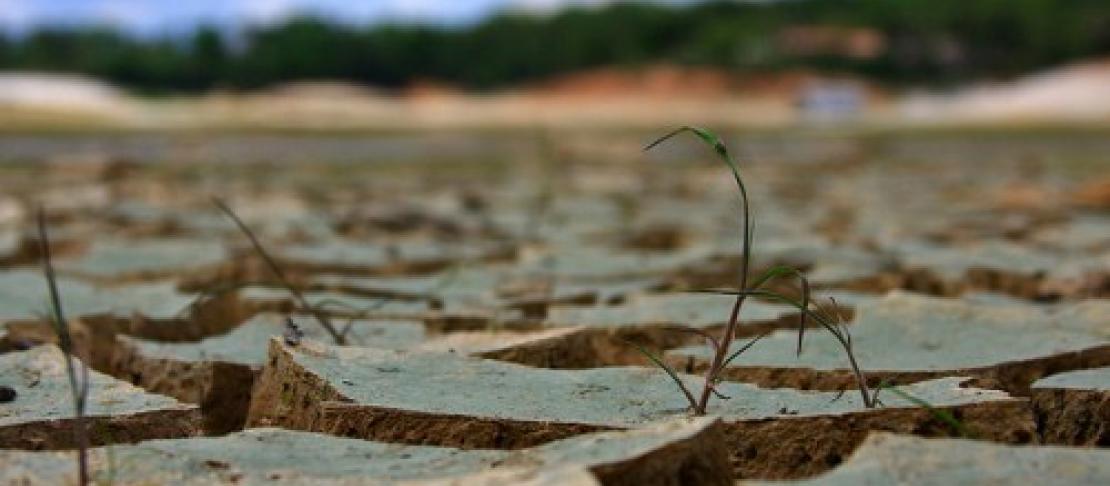Farmer-led innovation in combating drought and desertification

The United Nations has designated 17 June as the World Day to Combat Desertification and Drought (WDCD).
The goal of WDCD is not only to talk about the problems, but also the solutions. It’s clear that climate change will increase the risk of drought and desertification, but how much do we know – and what does this mean for agriculture? What are some solutions that farmers are already putting into action?
Droughts are affecting greater land area, especially in the subtropics and mid-latitudes. In the coming decades, droughts are expected to become more frequent and more severe under climate change.
Dryland agriculture, concentrated in the sub-tropics, generates almost 40% of the world’s staple foods to feed more than 2 billion people. With their short growing seasons and irregular rains, drylands are already vulnerable to water scarcity. A changing climate means even greater vulnerability to drought in these areas.
Drought is one driver of desertification, or land degradation in the drylands. Desertification occurs slowly, through loss of soil productivity and vegetative cover driven by human activities and climatic variations, such as droughts and floods. While fertile topsoil takes centuries to form, it can disappear within just a few seasons through practices such as over cultivation, overgrazing, deforestation, and poor irrigation practices (UNCCD). Land degradation is one cause of low agricultural yields as well as loss of biodiversity, and is also linked to poverty.
Innovation in the fields
As climate changes take hold across the globe, farmers are already finding solutions to desertification and drought, through innovations in agroforestry, land and water management. In Niger, farmers have been adapting by regrowing trees previously cleared for farmland — a process known as farmer-managed natural regeneration. The practice has spread across the Sahel, a semi-arid swathe of land spanning northern Africa between the Atlantic Ocean and the Red Sea, and farmers have grown over 200 million trees and rehabilitated five million hectares of degraded land. By leaving trees in their fields, farmers reap the benefits of more firewood, fewer pests and diseases, less soil erosion, rising water tables and higher crop yields.
Photoset: Innovative farming practices in the Sahel:
Throughout the Sahel, new methods of land management have proven to greatly improve yields. Constructing small stone walls along land contours is an effective way of reducing runoff from fields, preserving topsoil that otherwise would have washed away. Combined with planting crops in zai pits—shallow bowls filled with compost or manure that also help capture rain—the stone walls greatly increase cereal yields and improve soil fertility.
Check out climate smart farming successes that combat drought and desertification in the CCAFS publication Climate Smart Agriculture Success Stories
At the CGIAR Research Program on Climate Change, Agriculture and Food Security’s (CCAFS) Climate Smart Village sites in Lushoto, Tanzania and Nyando, Kenya, farmers are experimenting with agro-forestry as a method of reducing erosion and slowing land degradation. By integrating trees in farms and rangelands, farmers can both protect the land and reduce their dependence on a single staple crop, diversifying their livelihoods as another method of protection against climate risk.
VIDEO: Agroforestry in Nyando, Kenya
A recent episode of a popular TV show illustrated how farmers can use ‘evergreen’ farming, or the integration of trees into food crop systems, to prevent the loss of valuable topsoil on their farms. Kenya’s agriculture TV program Shamba Shape Up, supported by research from CCAFS and other CGIAR centers, provides 11 million viewers with information on how to “make-over” their farms with climate smart practices each week. By diversifying their crops with tree species, farmers can not only prevent soil erosion and rejuvenate soil through nitrogen fixation, but gain shade, firewood, timber, and animal fodder.
VIDEO: Shamba Shape Up Evergreen farming
Researchers are working hand in hand with communities to test tools and approaches that help combat these dual threats to food and farming. The challenge now is to promote widespread adoption of climate smart practices across the globe.
Read more on policy approaches to support farmers in managing the risks of climate change, drought, and land degradation: How can researchers and policymakers support farmers in combating drought and desertification?
Learn more:
READ: As climate change heats up, West Africa seeks solutions
READ: “Farmers should use trees to cushion their farms from degradation”
READ: TV show empowers farmers in Kenya
WATCH: Agroforestry in Nyando, Kenya
WATCH: Shamba Shape Up on Evergreen Farming
This blog addresses World Day to Combat Desertification and Drought.
Alexa Jay is a communications specialist with the Climate Risk Management theme. Sekou Toure is a communications specialist for CCAFS West Africa.
Join the conversation on Twitter with #WDCD2014.
